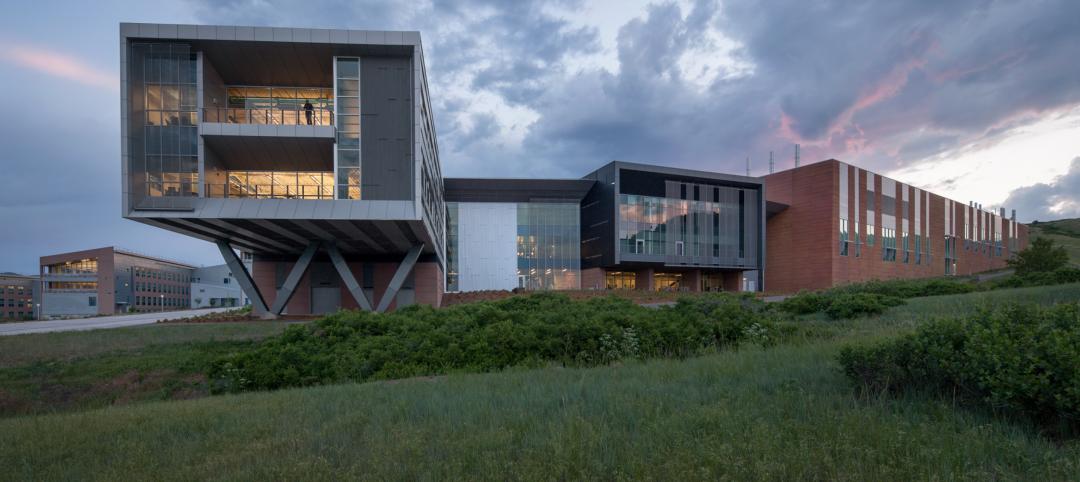More than one in seven banks now uses blockchain technology. American Express and Mastercard filed several patents last year related to the technology and B2B transactions, according to pymnts.com. And by 2022, global spending on blockchain technology by all sectors could hit $11.7 billion, from an estimated $1.5 billion in 2018, according to International Data Corp. (bit.ly/2uOq9qO).
While AEC firms are still trying to figure out where it fits into design and construction management, blockchain technology has grabbed hold of the financial services sector. IDC notes that the distribution and services sector is also latching onto this technology in a bigger way. And the New York Times reported last October that the concept of marrying blockchain to artificial intelligence is attracting entrepreneurs and investors.
For the uninitiated, the simplest explanation of this technology is that blockchain is a digital distributed ledger of transactions or records that exists across multiple participants and computers in a peer-to-peer network. Transactions can be added to the blockchain using a secure digital “signature.” In essence, it eliminates middlemen, and democratizes recordkeeping that is secured by “witnesses” who are incentivized by the blockchain’s digital currency.
Blockchain “is a clumsy little dance that a computer needs to do in order to simulate something that humans have been doing for thousands of years,” quips Dan Robles, CEO of the Integrated Engineering Blockchain Consortium, which has developed a working blockchain that prices infrastructure risk by monetizing data provided and validated by engineers.
Bitcoin is the best-known cryptocurrency that uses this technology for transactional purposes. And over the past decade, innovations from this technology have evolved from cryptocurrency exchanges and blockchain to smart contracts enforced by computer code and what’s known as “proof of stake,” which does away with data processing centers and replaces them with complex financial instruments for a higher level of security. This, according to Vinay Gupta, Founder of Hexayurt Capital, which was instrumental in creating Dubai’s Blockchain Strategy to issue all government documents on blockchain by 2020.
What users like about blockchain is its immutability—once data is recorded (and usually time stamped) on a block, it can’t be changed retroactively without the entire network’s collusion. Tampering with the integrity of the blockchain voids it, and transactions are no longer valid.
“Trust delivered by way of cryptography” is how Ian Church, Senior Projects Director for CBRE Global Workplace Solutions, describes blockchain. He believes the technology could eventually deliver “highly efficient investment valuations” that lead to incremental gains in property values.
In a 2017 paper by Arup Foresight based on a workshop with Deloitte, PwC, Volkswagon Financial Services, and the Ellen MacArthur Foundation, the engineering firm predicted that blockchain would have “a major impact on the built environment … in the same way the World Wide Web did.”
The paper didn’t stop there. Blockchain, Arup stated, could have a “profound effect on society” because it provides a platform where people, organizations, and even machines can transact “without having to trust each other.”
Related Stories
| Apr 23, 2014
Experimental bot transfers CAD plans onto construction sites
The Archibot is intended to take technical data and translate it into full-scale physical markings on construction sites.
Sponsored | | Apr 23, 2014
Ridgewood High satisfies privacy, daylight and code requirements with fire rated glass
For a recent renovation of a stairwell and exit corridors at Ridgewood High School in Norridge, Ill., the design team specified SuperLite II-XL 60 in GPX Framing for its optical clarity, storefront-like appearance, and high STC ratings.
| Apr 9, 2014
Steel decks: 11 tips for their proper use | BD+C
Building Teams have been using steel decks with proven success for 75 years. Building Design+Construction consulted with technical experts from the Steel Deck Institute and the deck manufacturing industry for their advice on how best to use steel decking.
| Apr 2, 2014
8 tips for avoiding thermal bridges in window applications
Aligning thermal breaks and applying air barriers are among the top design and installation tricks recommended by building enclosure experts.
| Apr 2, 2014
Check out the stunning research facility just named 2014 Lab of the Year [slideshow]
NREL's Energy Systems Integration Facility takes top honors in R&D Magazine's 48th annual lab design awards.
| Mar 26, 2014
Callison launches sustainable design tool with 84 proven strategies
Hybrid ventilation, nighttime cooling, and fuel cell technology are among the dozens of sustainable design techniques profiled by Callison on its new website, Matrix.Callison.com.
| Mar 26, 2014
First look: Lockheed Martin opens Advanced Materials and Thermal Sciences Center in Palo Alto
The facility will host advanced R&D in emerging technology areas like 3D printing, energetics, thermal sciences, and nanotechnology.
| Mar 21, 2014
Forget wood skyscrapers - Check out these stunning bamboo high-rise concepts [slideshow]
The Singapore Bamboo Skyscraper competition invited design teams to explore the possibilities of using bamboo as the dominant material in a high-rise project for the Singapore skyline.
| Mar 20, 2014
Common EIFS failures, and how to prevent them
Poor workmanship, impact damage, building movement, and incompatible or unsound substrate are among the major culprits of EIFS problems.
| Mar 13, 2014
Austria's tallest tower shimmers with striking 'folded façade' [slideshow]
The 58-story DC Tower 1 is the first of two high-rises designed by Dominique Perrault Architecture for Vienna's skyline.
















